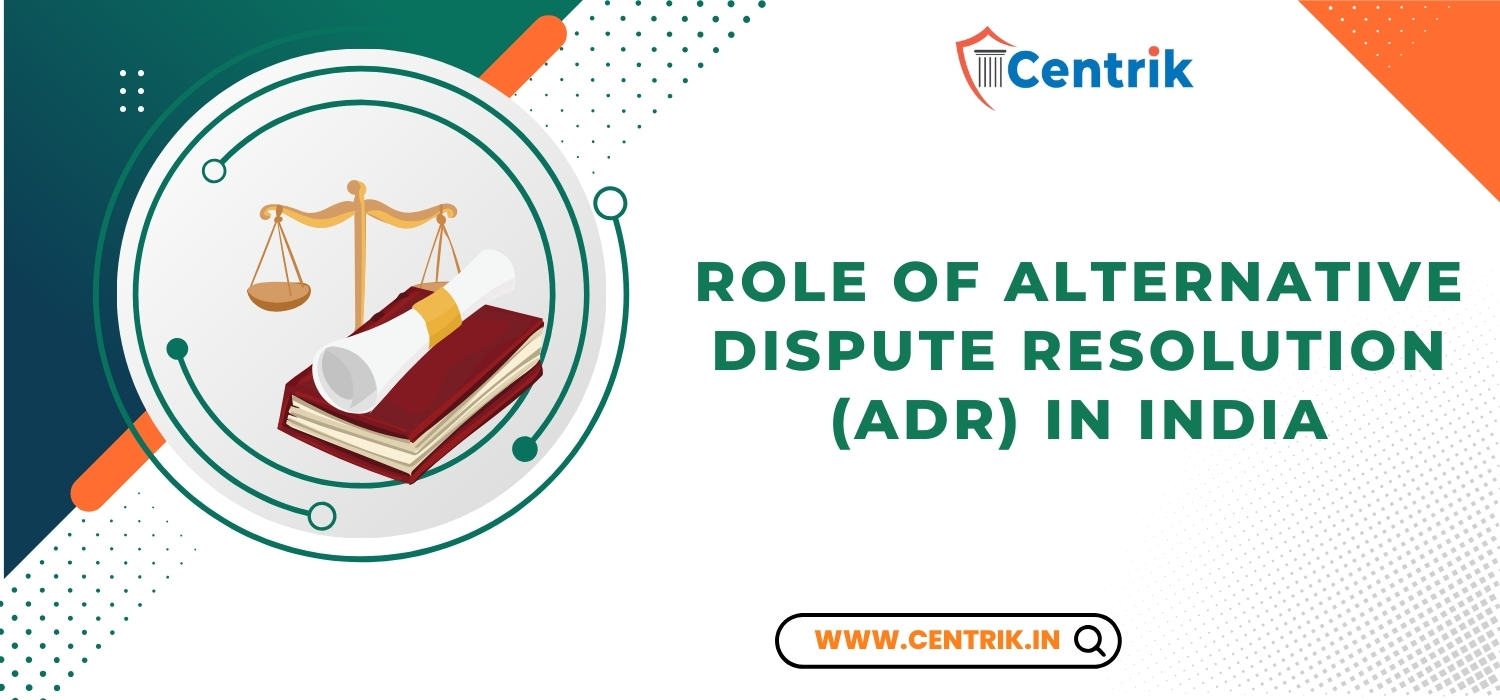Alternative Dispute Resolution (ADR) has increasingly gained prominence in India’s legal landscape, offering an alternative to the traditionally adversarial courtroom litigation. ADR encompasses various mechanisms such as Mediation, Arbitration, and Conciliation, which provide parties with more flexible, efficient, and cost-effective ways to resolve disputes outside the conventional court system.
This approach aligns well with India’s legal and socio-economic milieu, facilitating quicker and more amicable resolutions in a country characterised by a complex legal environment and a burgeoning population.

Historical Context and Evolution
Historically, India’s legal system was heavily rooted in litigation, but over the past few decades, there has been a significant shift towards ADR. The Indian judiciary, recognizing the limitations of an overburdened court system, has championed ADR mechanisms to streamline dispute resolution. The introduction of the Arbitration and Conciliation Act of 1996, modelled on the UNCITRAL (United Nations Commission on International Trade Law) model law, marked a pivotal step in formalising ADR processes. This Act, which underwent amendments in 2015 and 2019, aimed to enhance the efficacy of arbitration and conciliation proceedings.
Key ADR Mechanisms
- Arbitration:
Arbitration is a process where parties to a dispute agree to submit their issues to an arbitrator or a panel of arbitrators. The arbitrator’s decision, known as an arbitral award, is generally binding and enforceable in courts. The Arbitration and Conciliation Act, 1996 provides a robust legal framework for arbitration, promoting fair and efficient dispute resolution. Arbitration is particularly popular in commercial disputes, especially in sectors like construction, real estate, and international trade.
- Mediation:
Mediation involves a neutral third party, the mediator, who facilitates discussions between the disputing parties to help them reach a mutually acceptable resolution. Unlike arbitration, the mediator does not impose a decision but helps the parties negotiate a settlement. The Mediation and Conciliation Project Committee (MCPC) of the Supreme Court of India has been instrumental in promoting mediation as a viable dispute resolution tool, particularly in family and civil disputes.
- Conciliation:
Conciliation is similar to mediation but involves a conciliator who takes a more proactive role in suggesting possible solutions. The Conciliation Act of 1996, along with the rules laid down in the Act, provides a framework for conciliators to assist parties in settling. Conciliation is often used in labour disputes and family matters.
Benefits of ADR in India
- Cost-Effectiveness:
ADR mechanisms generally involve lower costs compared to litigation. The expedited process reduces legal fees, court costs, and other associated expenses.
- Speed and Efficiency:
ADR procedures are usually faster than traditional court cases, which can be prolonged due to the caseloads in Indian courts. This speed is especially crucial for commercial entities requiring prompt resolution to avoid business disruptions.
- Confidentiality:
Unlike court proceedings, which are public, ADR processes are typically confidential. This confidentiality helps protect sensitive information and maintain the parties’ privacy.
- Flexibility and Informality:
ADR offers a more flexible and informal setting for dispute resolution. The parties have greater control over the process and can customize the procedures to suit their needs.
- Preservation of Relationships:
ADR processes, particularly mediation and conciliation, emphasize collaboration and mutual understanding. This focus helps preserve business and personal relationships, which can be strained or damaged by adversarial litigation.
Challenges and Future Prospects
Despite its advantages, ADR in India faces several challenges. The perception of ADR as a less formal or secondary option compared to litigation can affect its acceptance among some parties. Moreover, while the legal framework is robust, the implementation of ADR practices varies, with disparities in regional acceptance and infrastructure.
To address these challenges, there is a need for greater awareness and training about ADR mechanisms. Initiatives by the judiciary and legal professionals to promote ADR, coupled with reforms to streamline processes and ensure uniform standards, will further bolster the role of ADR in India.
Conclusion
Alternative Dispute Resolution is playing an increasingly significant role in India’s legal ecosystem. By offering a more efficient, cost-effective, and amicable means of resolving disputes, ADR mechanisms align well with India’s diverse and rapidly evolving legal and economic environment. As awareness and infrastructure for ADR continue to develop, its role in shaping a more effective and equitable legal system in India is set to expand, providing valuable tools for dispute resolution in both personal and commercial contexts.




 join For Updates
join For Updates